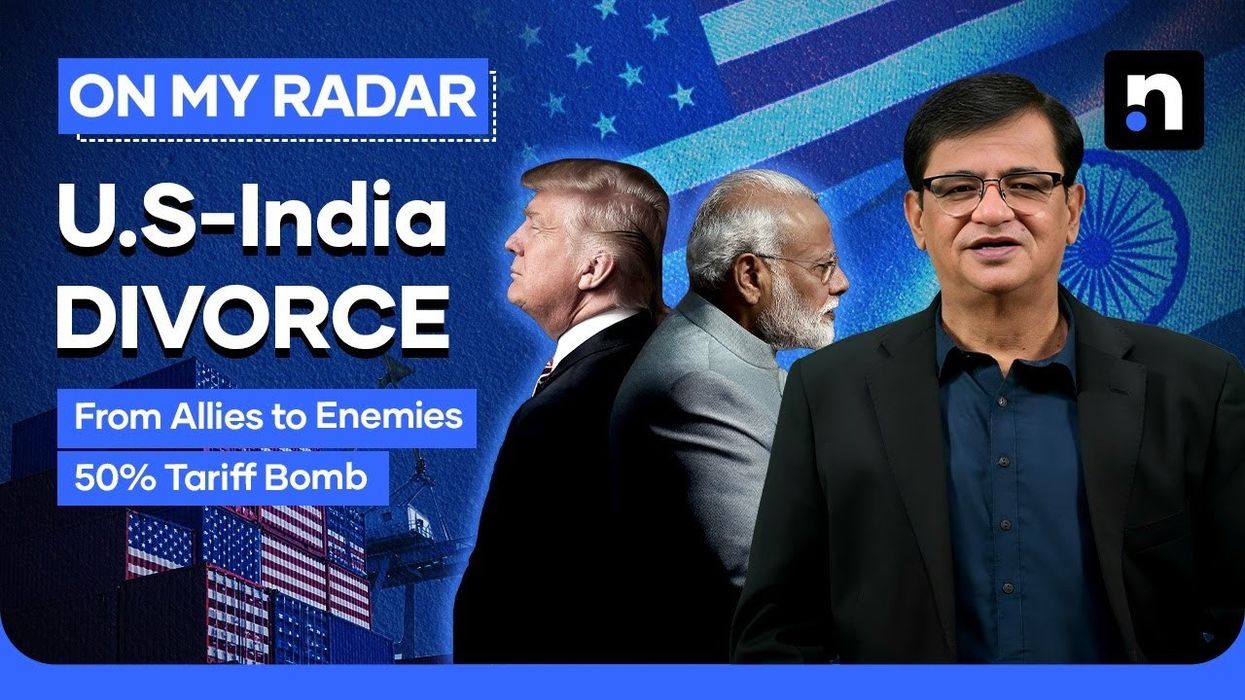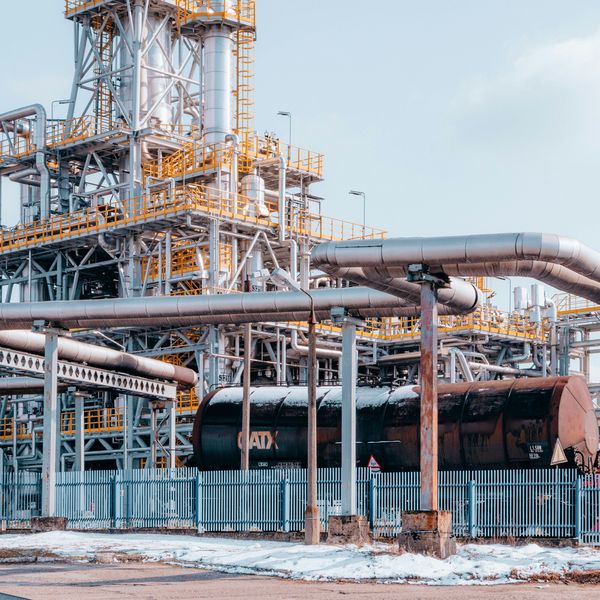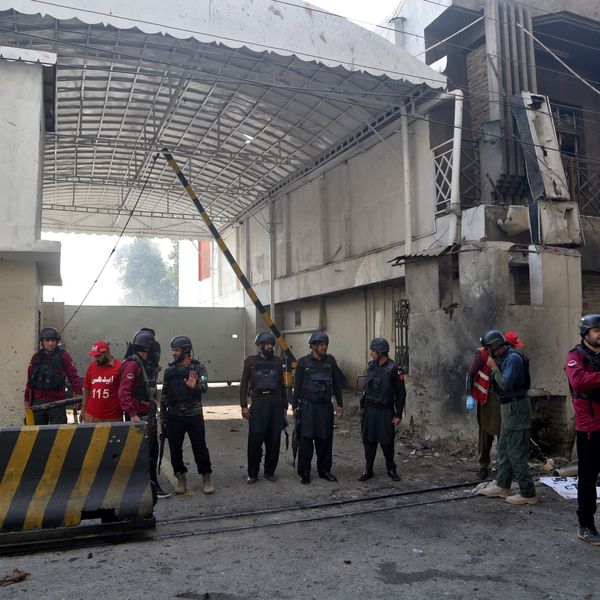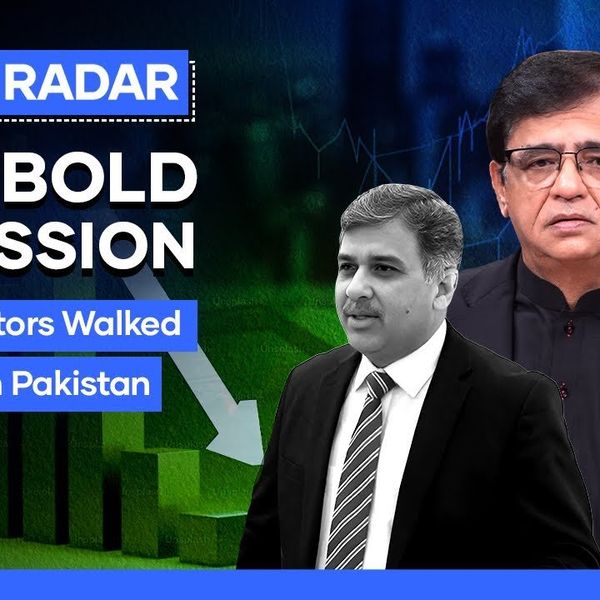US-India trade ties unravel as Trump slaps 50% tariff on Indian exports
In his vlog, Kamran Khan says US-India relations hit a new low as Trump imposes steep trade penalties and threatens further sanctions
News Desk
The News Desk provides timely and factual coverage of national and international events, with an emphasis on accuracy and clarity.
The once-flourishing U.S.-India trade partnership is rapidly deteriorating under President Donald Trump’s second term, as Washington imposes steep new tariffs on Indian goods and signals a broader economic and diplomatic split.
In a sweeping executive order, Trump doubled tariffs on Indian exports from 25% to 50%, citing India's ongoing imports of discounted Russian oil as a direct threat to U.S. national security and global interests. The White House labeled India a “trade abuser” and warned more sanctions could follow.
India reacted with disbelief.
New Delhi’s foreign ministry described the U.S. decision as “unfair, unjustified and unreasonable.” Yet, the White House doubled down, hinting that additional trade penalties and restrictions may be on the horizon.
The move marks a dramatic reversal in U.S.-India relations. In 2019, Trump and Indian Prime Minister Narendra Modi appeared side-by-side at the “Howdy Modi” rally in Houston, pledging to expand bilateral trade to $500 billion by 2030. But today, those scenes have faded into history.
Kamran Khan, in his vlog, said that India exported $86 billion worth of goods and services to the United States last year—33 billion from IT and digital services, 14 billion in electronics, and 10 billion in pharmaceuticals. Trump’s order directly targets these key sectors.
Especially hard-hit is India’s pharmaceutical industry, which supplies nearly 40% of generic drugs used in the United States. The Trump administration now plans to introduce a special tariff of up to 250% on Indian pharma imports.
“India has profited from buying cheap Russian oil and reselling it at market prices,” Trump wrote on Truth Social. “This must stop.”
Trump also pointed to past U.S. sanctions on six Indian firms for oil trading with Iran, suggesting India’s actions support destabilizing regimes and fund terrorism in the Middle East.
The economic blowback could be severe. According to India’s Global Trade Initiative, about 20% of Indian exports head to the U.S. A sustained 50% tariff could slash Indian exports to America by half.
Ajay Sahai, CEO of the Federation of Indian Export Organizations, warned that the new tariffs will affect over 55% of India’s U.S.-bound exports. ICICI Securities predicted India’s GDP growth could fall below 6% by 2026, while HDFC Bank economists said the overall impact on economic growth could double existing losses.
The dispute has exposed not just policy friction, but what appears to be a personal rift between Trump and Modi. Social media in India has erupted with hashtags like #EnemyNo1 and “From my dear friend to enemy No. 1,” capturing the sharp turn in bilateral sentiment.
Further adding to India’s diplomatic woes, Modi is expected to visit China later this month to attend the Shanghai Cooperation Organization (SCO) summit—a move analysts say could further strain U.S.-India ties.
The Washington Post wrote that India is playing its diplomatic cards “recklessly,” warning that high tariffs could make India unattractive as a manufacturing hub and open the door for regional competitors like Pakistan, Bangladesh, and Vietnam.
Carnegie Endowment’s Milan Vaishnav said Trump remains upset that India never publicly acknowledged U.S. efforts to broker a ceasefire between India and Pakistan during their recent military standoff. Trump’s administration repeatedly called the ceasefire “Washington-brokered,” while Modi claimed no foreign power intervened.
In Pakistan, however, relations with Washington appear to be warming.
Trump has publicly praised Pakistan’s leadership and people, calling Pakistan a “trusted strategic partner.” He invited Pakistan’s Army Chief, Field Marshal Asim Munir, to the White House for lunch—an event that stunned political circles in New Delhi.
The U.S. is reportedly in advanced talks with Pakistan to explore rare earth elements in Balochistan and Khyber Pakhtunkhwa, along with cooperation on crypto trade and petroleum resource development. Trump even hinted at a future where Pakistan could sell oil to India.
“There’s a clear shift,” said a recent New York Times editorial. “Trump is rewarding Pakistan and punishing India. It’s transactional diplomacy at its core.”
Trump’s administration has already signed a new strategic trade agreement with Islamabad, suggesting Pakistan may now occupy the very position India once held in Washington’s regional calculus.
As Trump pivots away from Modi, analysts say a new economic balance may emerge in South Asia—one that places Pakistan, not India, at the center of U.S. trade and strategic interests.
Whether this diplomatic realignment holds will depend on political developments in all three capitals. But for now, it’s clear: the Trump-Modi honeymoon is over, and a U.S.-India trade “divorce” may be underway.











Comments
See what people are discussing